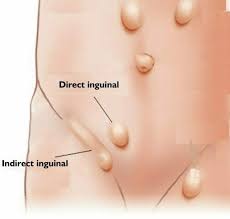Lapsurgery.com.au, The Future of Research for Hernia Prevention – Hernia are a common medical condition that occurs when an organ or tissue pushes through a weak spot in the surrounding muscle or connective tissue. While hernia repair techniques have advanced significantly, prevention remains a crucial area of research. Future studies aim to enhance our understanding of hernia development, improve preventive strategies, and reduce the need for surgical intervention.
Advances in Biomaterials and Tissue Engineering

One of the most promising areas of hernia prevention research is the development of advanced biomaterials. Scientists are working on bioengineered meshes that integrate better with human tissue, reducing the risk of complications and recurrence. Additionally, tissue engineering techniques, such as stem cell therapy and regenerative medicine, may strengthen weak abdominal walls and prevent hernia formation.
Genetic and Molecular Research
Recent studies suggest that genetic factors may contribute to hernia susceptibility. Future research in molecular biology and genomics aims to identify specific genes linked to weakened connective tissues. Understanding these genetic predispositions could lead to targeted therapies or lifestyle modifications to reduce hernia risk.
Non-Surgical Preventive Strategies
Lifestyle modifications, such as weight management, core-strengthening exercises, and proper lifting techniques, play a vital role in hernia prevention. Researchers are exploring new ways to educate at-risk populations, including wearable technology that monitors abdominal pressure and alerts users to potentially harmful movements.
The Role of Robotics and AI
Artificial intelligence (AI) and robotics are revolutionizing the medical field, including hernia prevention. AI-driven diagnostics can help identify individuals at high risk for hernias, allowing for early interventions. Meanwhile, robotic-assisted physical therapy programs may aid in strengthening abdominal muscles and improving posture, further reducing hernia risks.
Future Prospects and Challenges
While advancements in hernia prevention research are promising, several challenges remain. Funding limitations, the complexity of genetic research, and the need for long-term studies hinder rapid progress. However, continued collaboration between medical researchers, engineers, and healthcare professionals is essential to develop effective preventive strategies.
Personalized Medicine for Hernia Prevention
As medical research advances, the concept of personalized medicine is gaining traction in hernia prevention. By analyzing an individual’s genetic profile, lifestyle, and medical history, doctors may soon be able to provide customized recommendations to reduce hernia risk. This approach could involve tailored exercise programs, dietary plans to enhance connective tissue strength, and even targeted drug therapies to improve collagen production.
Emerging Drug Therapies
Pharmaceutical research is also exploring medications that could enhance the structural integrity of the abdominal wall. Some studies suggest that certain drugs can boost collagen synthesis, improve muscle tone, or regulate inflammatory processes that weaken connective tissues. While these treatments are still in experimental stages, they hold promise for non-surgical hernia prevention in the future.
The Impact of Aging and Chronic Diseases
Aging is a major risk factor for hernias, as connective tissues naturally weaken over time. Researchers are investigating how aging-related molecular changes affect tissue integrity and how interventions like hormone therapy, nutritional supplementation, or regenerative medicine could counteract these effects. Additionally, chronic conditions such as diabetes and obesity increase hernia risk. Future research aims to develop targeted therapies to mitigate these risks and improve overall abdominal wall health.
Public Health Initiatives and Preventive Education
Beyond medical and technological advancements, public health initiatives play a vital role in hernia prevention. Governments and healthcare organizations are increasingly focusing on preventive education, teaching people proper lifting techniques, promoting core-strengthening exercises, and encouraging weight management. Workplace ergonomics and physical training programs are also being developed to minimize occupational risks associated with heavy lifting.
The Future of Hernia Research Collaboration
Global collaboration among researchers, surgeons, and biomedical engineers is essential for advancing hernia prevention strategies. Multidisciplinary research teams are working together to explore new materials, genetic insights, and AI-driven solutions. Additionally, large-scale clinical trials will be necessary to validate new preventive measures before they become widely available.
Conclusion
The future of hernia prevention is filled with exciting possibilities. With breakthroughs in biomaterials, genetic research, AI diagnostics, personalized medicine, and lifestyle interventions, the goal is to significantly reduce hernia incidence worldwide. While challenges remain, continued investment in research and innovation will pave the way for safer, more effective hernia prevention strategies, ultimately improving health outcomes for millions of people.

